
This article will shows how this works, and how IV can affect your decision on what type of trade to open.
Directional Spreads
Let’s start with the simplest of options spreads, the put or call vertical spread which is often used as to place a trade for a stock to move in a certain direction. Here’s a slightly OTM (Out of The Money) call vertical debit spread on AAPL about a month away from expiration (a popular spread to play for stock price to rise). The stock price is $182 and the call vertical is long the 185 call and short the 190 call. Note the highlighted Vega section that will illustrate some important points regarding IV:
-
When the spread strikes are OTM (stock price is below both long and short call strikes) the trade is vega positive. This means while the spread remains OTM, increasing IV will help it retain more of its value.
-
As the stock price rises toward the spread strikes the degree of vega positive becomes less. It eventually becomes vega neutral at roughly the break-even point for the spread at expiration.
- As the stock price rises even farther, approaching the higher short strike and beyond, the trade will become vega negative. This means when the spread is ITM (In The Money), decreasing IV will help the value get closer to the spread width (the max gain).
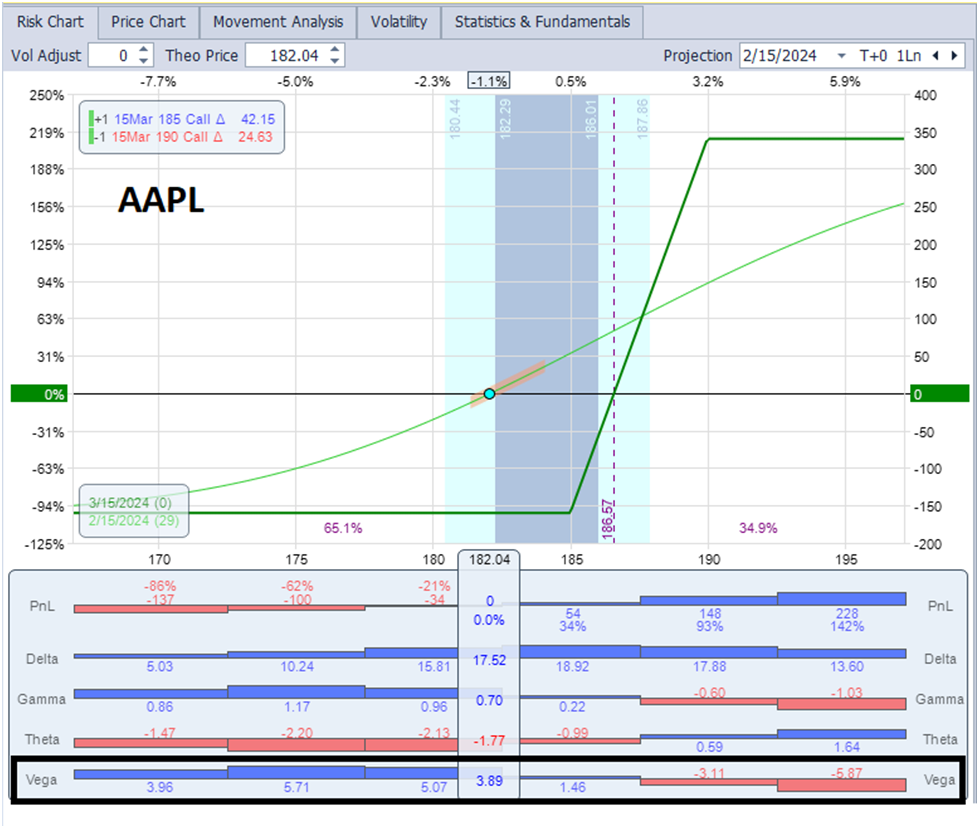
How can this factor into a trade opening decision? When opening a bullish call vertical spread when IV is elevated it may help to enter near the vega neutral position with the long strike ITM and short strike OTM. This will be likely be a setup where the max gain is equivalent to the max loss. If the stock price rises then you’ll hit the point where the spread becomes vega negative sooner, so any drop in IV won’t hurt. Conversely, if opening when IV is lower you can start out with both legs of the call vertical being OTM. This will give you a setup where the max gain is higher than the max loss, but you know that any further IV decline is less likely and therefore the downside risk due to dropping IV is not as high so it can be ok even though it will take more of a stock price rise to get to the point where the trade turns vega neutral and then vega negative.
Spreads for Minimal Stock Price Movement
I’m now going to focus on common spreads to play for minimal stock price movement. The Iron Condor (IC) is one such spread and shown in the following chart, it consists of both an OTM put credit spread and an OTM call credit spread. When the stock price is in the winning position between the wings it is vega negative meaning an IV drop will accelerate profit growth above the level that just time decay would generate. Conversely, an IV rise will decelerate profit growth. Also note that when the stock price gets to the losing zones within and beyond the wings, the IC becomes vega positive meaning an IV rise would help keep the losses smaller.
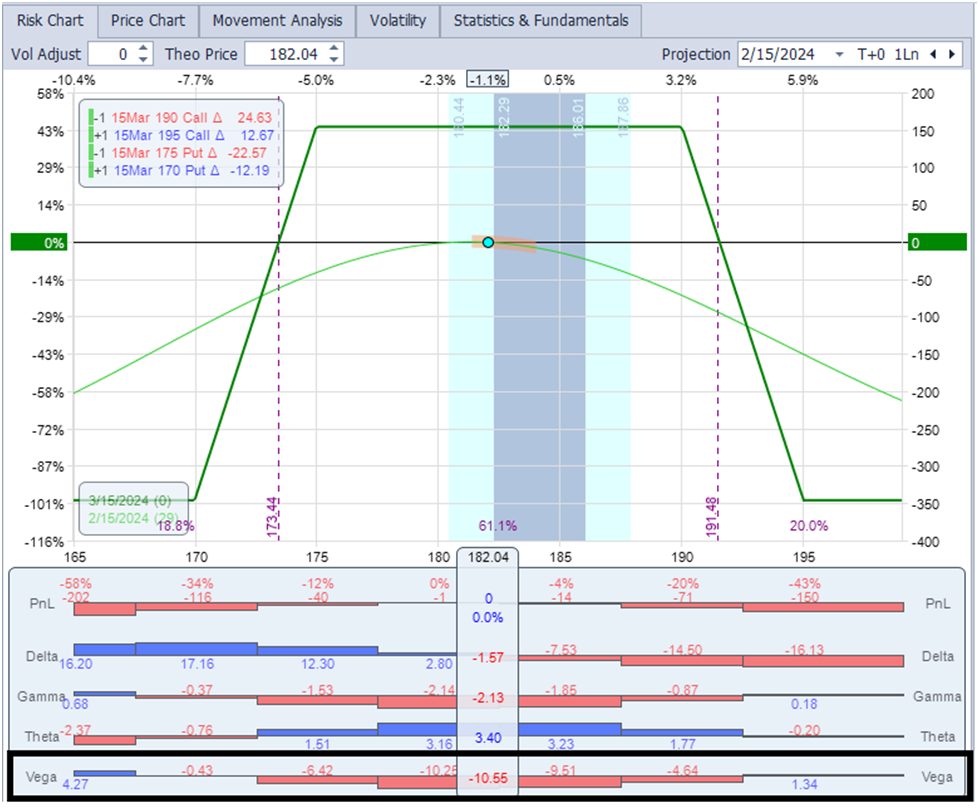
How can this impact a trade opening decision? Opening an IC when IV is low means that you’ll have to use closer to ATM strikes to get the same opening credit compared to times when IV is higher when you can get the same credit with farther OTM strikes. Also, when opening with low IV a further IV decline is less likely, so you won’t get the accelerated profit growth when IV drops. Opening an IC when IV is somewhat elevated means to can go farther out with strikes (so a bigger stock price move is required to get to the losing zones) and any IV decline can accelerate profit growth provided the stock price doesn’t make a significant move.
Many people don’t like Iron Condors due to their risk vs reward where the max loss is higher than the max gain. Let’s look at two other common spreads to play for minimal stock price movement that have more equal risk vs reward and how IV can factor into which one to use. The first is the calendar spread, which commonly uses the ATM strike when playing for minimal stock price movement. The primary gain catalyst is theta decay (and minimal stock price movement) but IV can also factor in. As shown on the chart below, its vega positive everywhere meaning that rising IV will always help the trade. Rising IV will both increase the gain potential and widen the profit tent. Declining IV will lower the gain potential and tighten the profit tent.
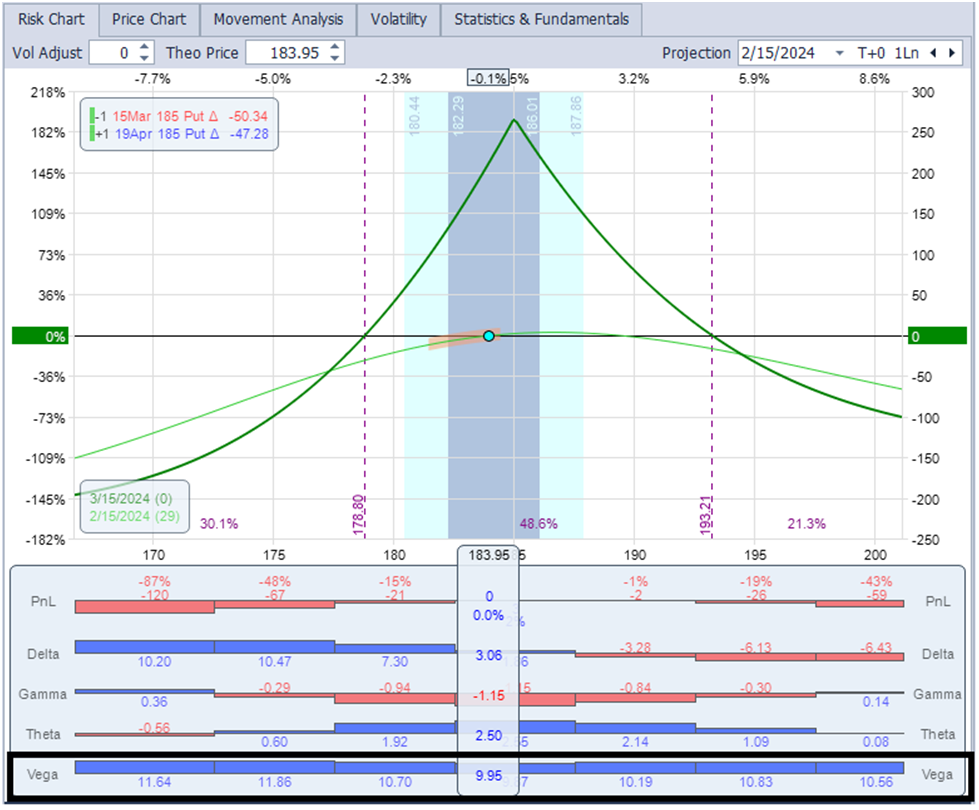
The other common spread to play for minimal stock price movement is the butterfly spread. Its PnL chart looks very similar to that of the calendar with a balanced risk vs reward and similar break-even points. The primary gain catalyst is the same as the calendar, theta decay and minimal stock price movement. But there is one important difference, the butterfly is vega negative when in the winning zone meaning that declining IV will allow gains to grow at a quicker rate.
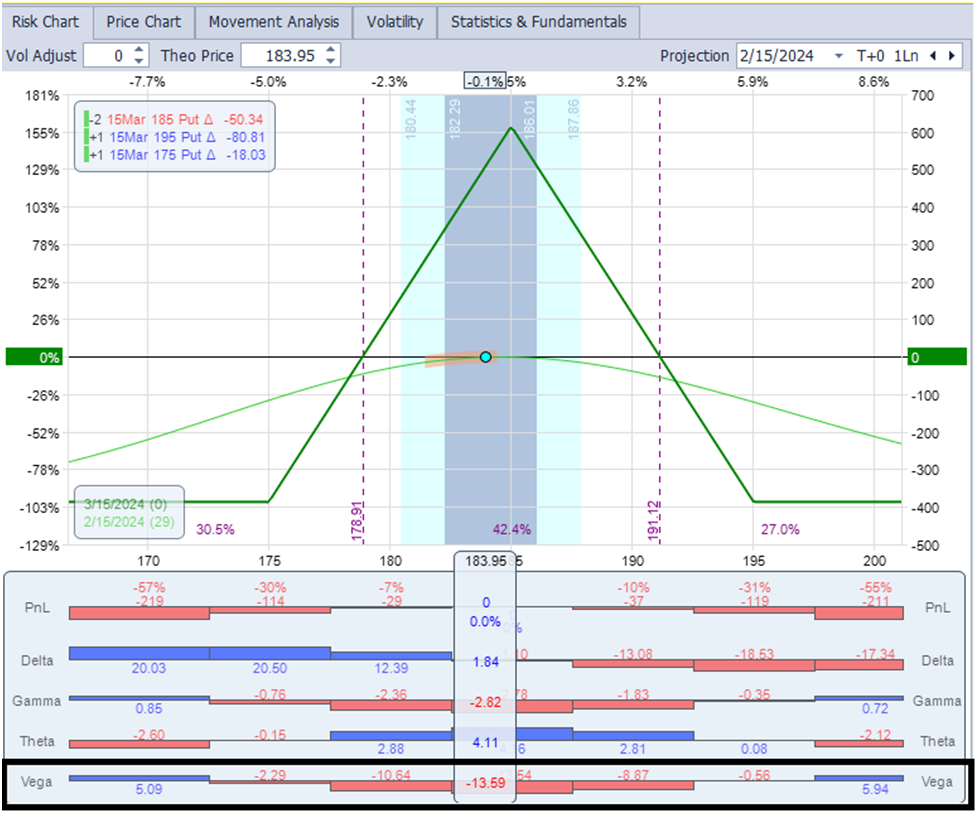
How can this impact a trade opening decision. When IV is lower, further IV decline is less likely so using a calendar is a good choice as any rise in IV can help the trade. However, when IV is elevated and IV decline is more likely then a butterfly can be a good choice as any decline in IV can help the trade.
Spreads for Stock Price Movement in any direction
I’m now going to focus on common spreads to play for significant stock price movement, either up or down. A long straddle or long strangle consists of only long legs, so they are always vega positive. Rising IV will lessen the impact of negative theta, falling IV will add more price decrease to that of negative theta alone. This is why straddles and strangles are typically used in the timeframe before earnings where you have the virtually guaranteed IV increase to counteract some of the negative theta.
A reverse iron condor (RIC) is the inverse of the iron condor. It consists of and OTM call debit vertical spread and an OTM put debit vertical. How far away from ATM you go impacts the risk vs reward setup. Note that the RIC is vega positive when in the losing zone between the put and call wings, so any IV decline will accelerate losses. The trade becomes vega negative when the stock price moves into a winning zone, so if you get the stock price to move then you are guaranteed to have a winning trade regardless of what happens with IV.
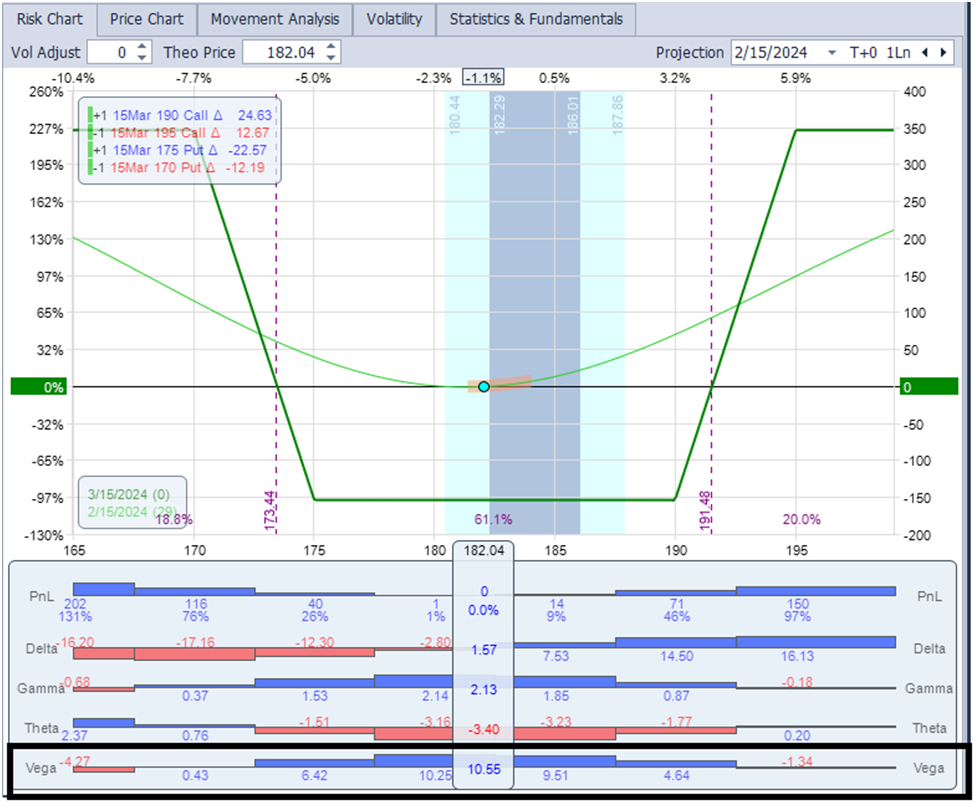
There are certainly more complex trade setups to use in any of these scenarios, but I’ve covered some of the most popular trades and you can see how current IV can impact your decision to use one trade setup instead of another.







There are no comments to display.
Create an account or sign in to comment
You need to be a member in order to leave a comment
Create an account
Sign up for a new account. It's easy and free!
Register a new account
Sign in
Already have an account? Sign in here.
Sign In Now